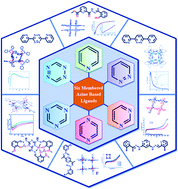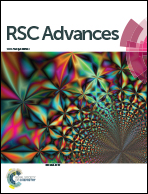Recent developments in supramolecular complexes of azabenzenes containing one to four N atoms: synthetic strategies, structures, and magnetic properties
Abstract
For the last couple of decades, azabenzene-based ligands have drawn much attention from inorganic chemists due to their ability to coordinate with different metal ions to form supramolecular clusters. These azabenzenes are weak σ donors and strong π acceptors and electron-deficient. Metallogrid complexes and non-grid oligomers are well-defined supramolecular clusters, formed by appropriate chelating ligands, and can show interesting optical, magnetic, and electronic properties. Self-assembly of [n × n] metallogrid complexes is dominated by the entropic factor while the formation of oligonuclear metal ion complexes is dominated by other effects like CFSE, electrostatic factors, ligand conformational characters, etc. Herein, the present article gives an overview of six-membered heterocyclic azine-based ligands and their potential for different metal ions to form polynuclear complexes. Moreover, their temperature-dependent magnetic properties and SCO phenomena are well described and tabulated.

- This article is part of the themed collection: 2022 Reviews in RSC Advances


 Please wait while we load your content...
Please wait while we load your content...